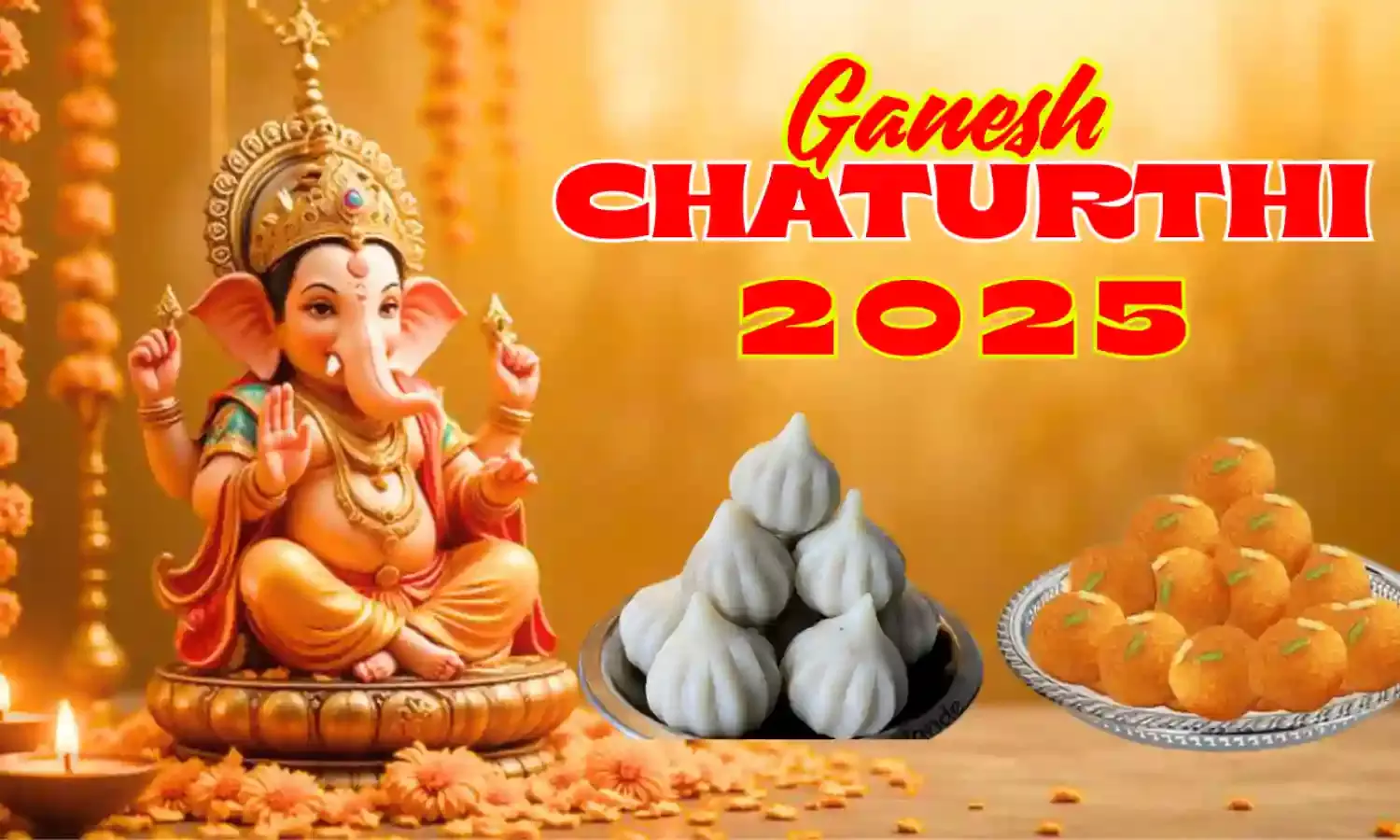Ganesh Chaturthi 2025: Festival of Faith, Joy & Special Dishes for Lord Ganesha

India is a land of vibrant festivals, and among them, Ganesh Chaturthi shines as one of the most loved and celebrated occasions. Every corner buzzes with the chant of “Ganpati Bappa Morya!”, houses sparkle with warm lights, while the sweet aroma of festive delicacies drifts around. But beyond the celebrations lies a deep spiritual meaning, cultural unity, and heartfelt devotion to Lord Ganesha—the remover of obstacles and harbinger of new beginnings.
The Significance of Ganesh Chaturthi
Ganesh Chaturthi, also known as Vinayaka Chaturthi, is a festival dedicated to the birth of Lord Ganesha—the beloved son of Lord Shiva and Goddess Parvati. Recognized for his elephant-like head and revered as the god of wisdom, prosperity, and good fortune, Ganesha holds a special place in the hearts of devotees. This is why families and communities across India, as well as abroad, welcome him with deep devotion and celebration.
The celebration takes place during Bhadrapada, a month in the Hindu calendar that falls between August and September, beginning on the Shukla Chaturthi, or the fourth day after the new moon. According to tradition, it is believed that during this period, Lord Ganesha visits the Earth to bless his devotees before returning to his divine abode.
How Ganesh Chaturthi is Celebrated
The celebrations range from intimate family rituals to grand public pandals.
1. Home Celebrations
Families bring home a clay idol of Ganesha, decorate it with flowers, and place it in a beautifully adorned altar. For the next 1.5, 5, 7, or 10 days, daily prayers, aarti, and offerings are made. The sound of devotional songs fills the home, creating a sacred yet joyous atmosphere.
2. Community Pandals
Public celebrations are marked by huge, artistically designed pandals where massive Ganesha idols are installed. These become cultural hubs featuring music, dance, and social gatherings. "The decorations in many pandals often carry a message, focusing on topics such as nature conservation, community bonding, and the richness of culture."
3. Visarjan (Immersion Ceremony)
The festival concludes with the immersion of Ganesha idols in rivers, lakes, or sea—symbolizing the cycle of birth, life, and return to the universe. Devotees chant “Ganpati Bappa Morya, Pudhchya Varshi Lavkar Ya!” (O Lord Ganesha, come back soon next year!) with teary eyes and hopeful hearts.
Why the Festival is So Special
Ganesh Chaturthi symbolizes not only traditions but also harmony, creativity, and deep spirituality. Children eagerly help decorate the idol, artists spend months crafting intricate statues, and entire neighborhoods unite in celebration. The festival binds families together, inspiring everyone to set aside troubles, invite happiness, and trust in new opportunities.
For many, it is also a personal festival of gratitude. People thank Lord Ganesha for removing obstacles in their lives, be it in careers, studies, or family matters.
Ganesh Chaturthi Special Dishes
If there is one thing that makes Ganesh Chaturthi even more delightful, it is the food prepared as an offering to Lord Ganesha. Known as naivedya, these dishes are cooked with devotion and then shared as prasad among family and friends. Each recipe has a story, a tradition, and a flavor that makes the festival truly unforgettable.
1. Modak – The Divine Favorite
Modak is not just a sweet; it is the very essence of Ganesh Chaturthi. Shaped like a small dome with folds at the top, modaks are believed to be Lord Ganesha’s favorite treat. The most loved variety is Ukadiche Modak, made by steaming rice flour dough stuffed with a mixture of grated coconut, jaggery, and cardamom. When steamed in turmeric leaves, they carry a natural fragrance that makes them heavenly. There are also fried versions—crispy on the outside and sweet inside—that stay longer and are equally popular. Offering 21 modaks is considered highly auspicious.
2. Ladoos – Sweet Symbols of Wholeness
Round, soft, and rich, ladoos are another must-have. From golden besan ladoos made with roasted gram flour and ghee, to boondi ladoos bursting with sugary pearls, these sweets symbolize prosperity and completeness. In many homes, ladoos are also made with dry fruits, coconut, or semolina (rava), each variety carrying a different taste and texture.
3. Puran Poli – A Festive Indulgence
“A traditional Maharashtrian delicacy, this flatbread is filled with a sweet mixture of cooked chana dal and jaggery, delicately spiced with cardamom and nutmeg. ”Served with a generous dollop of ghee, puran poli is not just food—it is comfort on a plate. Families often make it in large batches, as it is loved equally by children and elders during the festival.
4. Patholi – A Coastal Delicacy
In the Konkan belt, Ganesh Chaturthi feels incomplete without patholi. Rice flour batter is spread over turmeric leaves, filled with a coconut-jaggery mixture, then folded and steamed. The result is a delicate sweet dish infused with the earthy aroma of turmeric leaves. The combination of fragrance and flavor makes patholi truly unique to this festival.
5. Karanji and Gujiya – The Crispy Treats
Known as karanji in Maharashtra and gujiya in North India, these crescent-shaped pastries are filled with coconut, jaggery, poppy seeds, and dry fruits, then deep-fried until golden brown. Their crisp outer layer and melt-in-the-mouth filling make them both a ritual offering and a teatime snack during the festive days.
6. Savories like Chakli and Poha Chivda
While sweets dominate the offerings, crunchy savories also play an important role. Chakli, a spiral-shaped snack made from rice flour and spices, adds a crispy contrast to the sugary modaks and ladoos. Similarly, Poha Chivda (flattened rice mixed with peanuts, curry leaves, and mild spices) is a light snack that balances the heavy festive feasts.
Conclusion
Ganesh Chaturthi is more than a religious festival—it’s a reminder that life, like the clay idol, is temporary, but what matters is how we fill it—with joy, wisdom, and devotion. The festival unites people in prayer, song, dance, and food, creating memories that last a lifetime.
As the chants fade during visarjan, one truth remains eternal: faith never immerses; it only grows stronger. And that’s why, year after year, millions eagerly wait to welcome their beloved Ganpati Bappa again.


